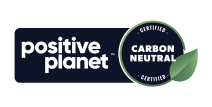It happens more often than we realise – our content performance isn’t what we were expecting, even though we put a lot of time into creating that guide, blog or review.
However, if you didn’t target a good keyword with decent search volume – or any keyword at all – then you can’t expect to receive a good level of organic search traffic.
If you’re encountering this situation, then the solution to your problem is keyword mapping.
What is keyword mapping?
Essentially, keyword mapping is the process of assigning SEO keywords to a specific content page. It goes hand in hand with keyword clustering here at Skittle Digital.
We research and assign keywords with high potential to pages which need a boost, before clustering in related keywords to help boost the overall volumes we are targeting.
Keyword mapping is an essential part of the content creation process, and if you haven’t done it for older pages then it should form part of your content audit to avoid issues such as content decay in the future.
If you’re new to keyword mapping, or want to ensure your strategy is on point, here’s our 7 step formula for keyword mapping success.
1. Identify your problem pages
Part of any content strategy process involves identifying what your goals are. You can only achieve your goals once you know which pages you are working on, so your first step is to get together a list of URLs which aren’t performing at the level you’d expect.
You will be able to find this information from a tool such as Google Analytics or from completing a content audit.
While GA can be useful for identifying purely data-led information such as a decline in traffic over time, we recommend completing a content audit before moving into the keyword mapping stage.
This is because you’ll be able to pinpoint the pages which are suffering explicitly due to the fact that they aren’t targeting keywords with a high enough search volume.
2. Set your goals
You may have been given specific goals or KPIs you need to meet within specific timeframes, such as a 15% organic traffic increase for a certain section of your site within 6 months. Alternatively, you can set your own goal.
Ideally, you want to have specific figures to work towards as this will help you to think more strategically about your keyword mapping.
3. Note down key words and phrases
Working one URL at a time, open your page and note down the topics it discusses. You will want to ensure there is one overarching theme and secondary topics discussed as part of it.
It will be easier to move onto the next step if you have a bigger range of topics noted down. Keep them as short as possible, for example:
- Driving in snow
- Driving in cold weather
- Using winter tyres
- Using snow tyres
Think about the different ways people may describe these topics. In the above example, we listed ‘winter tyres’ and ‘snow tyres’ as people may use either of these terms interchangeably.
Similarly, people may refer to snow as ‘cold weather’ or be looking for the same type of content for either term.
4. Analyse your keywords
Next, open your keyword research tool and check out the search volumes for the words and phrases you noted down. If you’re lucky, you will find that there is a good volume associated with the word or phrase, but it’s more likely you’ll need to dig around to find the best keyword.
You can try one of the following methods to find the words and phrases people are searching for the most:
- Look at People Also Ask results in Google and enter these variations
- View related keywords in your research tool and find the ones with higher search volumes
- Enter synonyms or similar wording; for example, your page may target the word ‘misfuelling’ but people are actually looking for ‘wrong fuel in car’
- Remove words from your phrase or reorder them to see how this changes results
If you’re having no luck, just disregard the keyword and move onto the next one. You will have made as big a list as possible during the previous step, so it’s unlikely you will end up with no results overall.
Make a note of all the keywords with search volumes and keyword difficulties you deem to be appropriate for your site to target.
Include an additional column to note down the searcher intent for each of your keywords.
5. Refine your lists for relevancy and intent
You will now have lists of keywords next to each URL that are targeted for better search volumes than you had before. It can be tempting to include as many of these as possible, but you run the risk of issues such as search intent mismatch if you apply a ‘one size fits all’ policy.
Now you need to refine your data to ensure that all of the keywords you end up targeting when you rework your content are both relevant to the page and matching the search intent.
In the previous step, you noted down the searcher intent for each of your keywords. Does this intent match the purpose of your page? For example, if you have written an informational ‘how to’ guide on how to drive in snow, you don’t want the bulk of your keywords to have transactional intent.
What’s more, you don’t want to get carried away with the potential of a high-volume keyword if it will detract from the relevancy of your content. For example, you may find that ‘driving with dipped headlights’ has a lot of searches, but would this keyword be better off on another page?
6. Cluster your keywords
Now that you have a list of refined and relevant keywords, you will find that some of them belong together – e.g. drive at night, night driving, driving at night – while others sit on their own.
First, group your clusters together. Then, check the keywords in your research tool to ensure you’ve captured those with the highest potential and not missed any.
After that, you want to build out those keywords which don’t currently belong to clusters. You can do this by entering them into your keyword research tool and looking at the related keywords.
7. Rewrite your content
Now that you have clustered and highly focused keywords with good search volumes, it’s time to rewrite your content. Ensure you include the keywords as naturally as possible, without overdoing your efforts to include every single phrase variation in a cluster. If in doubt, go with the keyword that has the highest volume and include secondary variations where possible.
Some good rules of thumb include having the focus keyword (your highest volume keyword which summarises the content page best) in the H1, title tag, URL and meta description. Include your other keywords in subheadings where possible.
When rewriting content, ensure that you adhere to E-E-A-T guidelines wherever possible to give it the best chance of success.
Need help with keyword mapping?
If you want help with building out an effective keyword mapping and clustering strategy, we’re on hand to help.
Book a Free Acquisitions Workshops, where you will gain invaluable insights during a discussion with our marketing experts, and a bespoke plan to improve your site for organic success.












